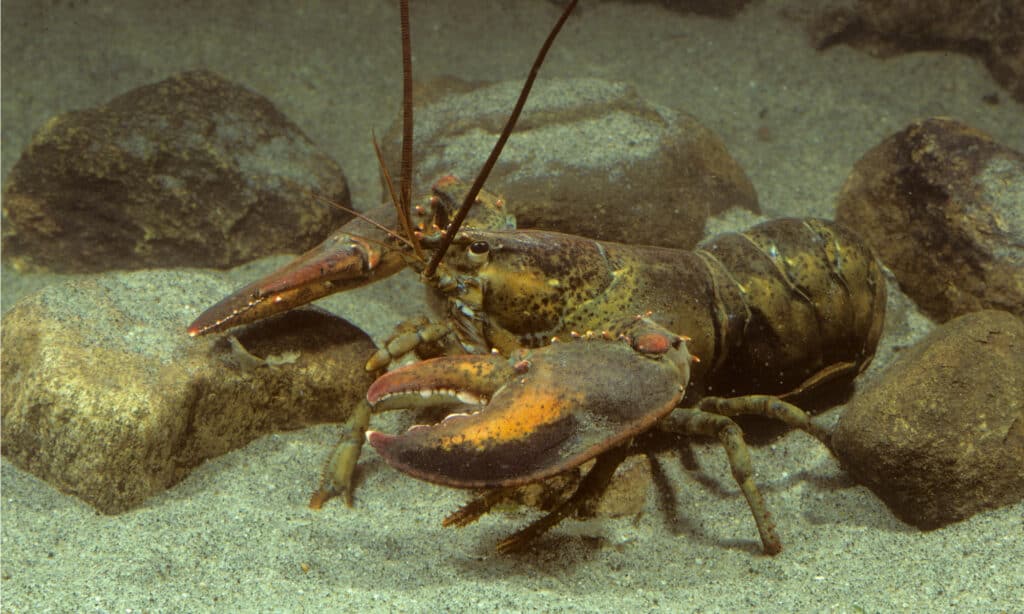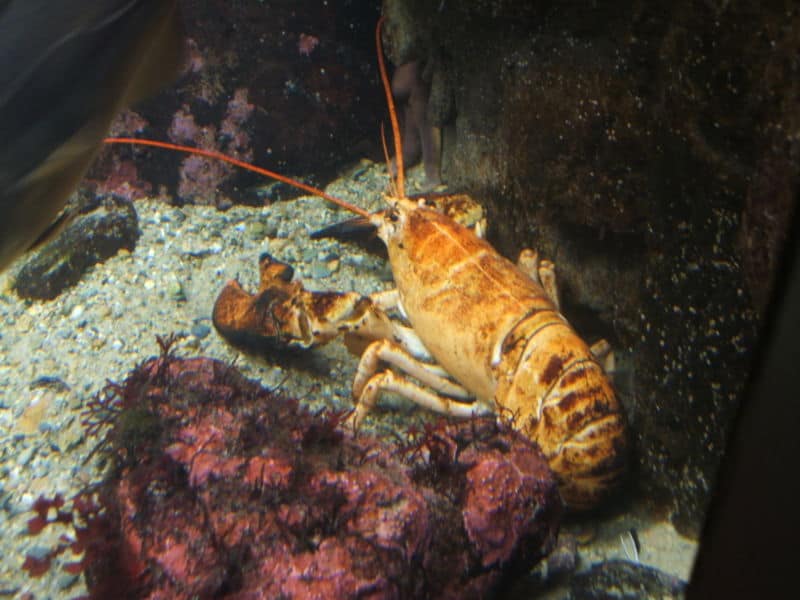When it comes to anatomy, lobsters are a fascination of the sea. The stomach of a lobster contains a gastric mill used to crush ingested food matter. Their brains are located in their throats, while their heart and central nervous systems rest in their abdomens. Lobster eyes detect shadows and light, but don’t pick up colors or images. And finally, lobsters taste with their feet and hear using the sensory hairs on their legs. Are there any differences between male and female lobsters? Are you preparing a lobster meal and want to know which sex is preferable? Let’s take a closer look and discover how to tell them apart and more!
Comparing a Male and Female Lobster
| Category | Male Lobster | Female Lobster |
|---|---|---|
| Morphology | Swimmerets are hard and stiff | Swimmerets are feathery and soft |
| Mating | Accepts mate into his burrow, engages in mock boxing match, protects female while she molts | Initiates mating by seeking out the burrow of chosen mate, deposits pheromones and molts when ready to mate |
| Reproduction | Pierces the abdomen of his mate with swimmerets and deposits sperm packets | Releases eggs when the time is right, fertilizes as they pass through her body, carries an average of 20,000 eggs on her tail until ready for hatching |
| Taste | The same as a female, likely more claw meat | The same as a male, likely more tail meat, may contain roe, or unfertilized eggs that are considered a delicacy |

A female lobster lingers outside a male lobster’s den, hoping to begin the mating process.
©Breck P. Kent/Shutterstock.com
Male vs. Female Lobster: Morphology
The simplest way to tell a female lobster from a male lobster is by taking a look at their swimming legs, called swimmerets. These appendages are located along their tails and function to help them swim. In males, they are used for reproduction and in females they help carry and protect her eggs once breeding has taken place. The first pair of swimmerets will look different from the rest in both males and females. In females, the first pair are feathery and soft. In males, these swimmerets are hard and stiff.
Tail differences can also provide a clue as to whether a lobster is male or female. This difference can be easily observed if you have a male and female lobster side by side. Females tend to have broader tails, since this is where she carries her eggs. Males will often have larger claws than females, but this is not always the case.
Male vs. Female Lobster: Mating Behaviors
A female lobster will initiate mating by seeking out the dominant male with the most attractive burrow. Male lobsters battle one another with their powerful claws to secure the best home. This coveted burrow is the most spacious and secure, typically on a rocky patch of ocean floor. Subordinate males are sometimes evicted from their burrows during this time. Once the female lobster finds her chosen mate and burrow she will entice him to invite her in by hanging around for a period of days. She’ll then begin urinating at the entrance, depositing the intoxicating scent of her pheromones.
Males are typically aggressive with females until the pheromones take effect. Once a male invites a female into his burrow, they engage in an elaborate ritual involving a mock boxing match that concludes with the male stroking the female. The female lobster will then molt: she’ll shed her hard shell to give the male easier access and it will regrow after mating. Once her hard carapace is shed he will turn her on her back to mate with her. He pierces her abdomen with his first pair of swimmerets and deposits sperm packets into her sperm receptacles. She will store these for up to two years before releasing eggs.
Male vs. Female Lobster: Reproduction Responsibilities
When the female determines that the time is right, she releases the eggs, which are fertilized by stored sperm as they pass the seminal receptacle. Female lobsters carry over 5,000 fertilized eggs for a period of about 10 months. The average number of eggs is 20,000, but older females may carry up to 100,000 eggs! She attaches these under her tail with a gluey substance. She is sometimes called a berried lobster during this time because the little eggs look like small berries.
When it’s time for a female to lay her eggs, she travels from the cold depths to warmer waters and finds a sand bank in the shallows, where she digs a pit. However, she may arrive in an area and discover that the spaces are all taken. In this case, she will have to battle for her territory. Size plays a large factor in success during these battles. If a larger female with formidable claws approaches a smaller female at her den, she will likely succeed in taking it over as her own. The warmth of the shallow water speeds egg development. After two months, the eggs hatch.

A female lobster will initiate mating by seeking out the dominant male and lingering with the most attractive burrow.
©Steven G. Johnson, CC BY-SA 3.0, via Wikimedia Commons – License
Male vs. Female Lobster: Taste
If you’re preparing a lobster meal and want to know if males taste different from females, the answer is no. The meat of both female and male lobsters is rich and decadent. Female and male lobster taste the same, unless you are eating a female lobster that still has her eggs, or roe. Though females tend to have larger tails and males tend to have larger claws, their meat tastes the same.
In order to maintain healthy populations, female lobsters that are carrying fertilized eggs are generally not harvested. However, since they carry their unfertilized eggs on their abdomens for extended lengths of time, it’s not uncommon to catch one who still has eggs that have not been deposited onto her tail. These roe are green when fresh and coral-colored once cooked. They’re called coral and considered a delicacy. They tend to be less salty and sweeter than other types of caviar. Lobster roe is delicious all on its own and can also be incorporated into gourmet seafood soups and sauces.
Up Next
- Stop boiling your lobsters! Crustaceans can feel pain.
- Lobster Lifespan: How long do they live?
- Langoustine vs. Lobster: what are the differences?
The photo featured at the top of this post is © LittlePerfectStock/Shutterstock.com
Sources
- Maine Lobsterman's Community Alliance, Available here: https://mlcalliance.org/all-about-lobster/lobster-1-3-reproduction-and-life-cycle/
- Freshies Lobster Co., Available here: https://freshieslobsterco.com/blogs/news/fun-facts-about-the-female-lobster
- Lobster Talk, Available here: http://lobstertalk.com/tell-lobster-male-female/
- New York Times, Available here: https://www.nytimes.com/2005/08/09/science/in-lobster-courtship-traits-like-humans.html
Thank you for reading! Have some feedback for us? Contact the AZ Animals editorial team.







